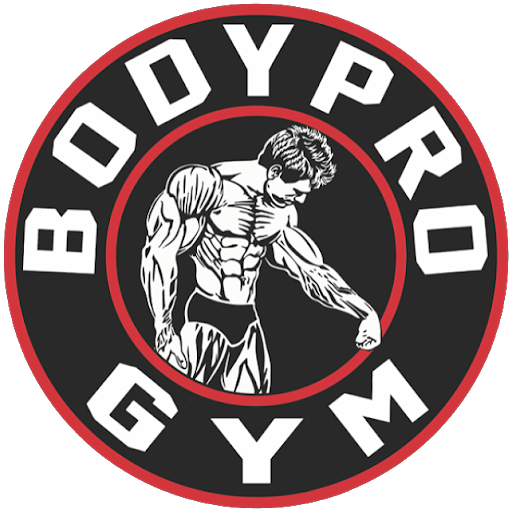6 Men Who Could Have Won The Olympia
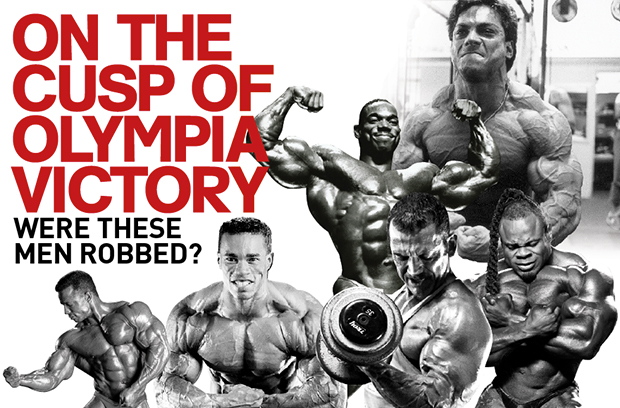
Olympia Contest Coverage Sponsored by BODYPRO Gym
In all sports, there is the argument that no matter the productivity, talent, and career resume, one cannot reach a certain level of prestige and prominence without “winning the big one.” In football it’s the Super Bowl, baseball has the World Series, and in bodybuilding it’s the Mr. Olympia crown. Since the title’s inception in 1965, only 15 men have claimed bodybuilding’s greatest honour, and many more have fallen short. Here’s six of the best that weren’t able to hoist the legendary Sandow trophy. And while none of these men have taken the Mr. Olympia title, make no mistake, they are among the best of the best. True legends in the annals of bodybuilding history.

Lee Labrada
Possibly the best pound-for-pound bodybuilder ever, the Cuban-born Labrada was known for classical lines, near-perfect proportions, and lights-out conditioning. What held Labrada back from winning the elusive Sandow trophy was a lack of sheer size. At 175–180 pounds onstage, he just simply gave up a little too much muscle and overall size to the likes of Lee Haney and Dorian Yates.
Labrada did have an amazing IFBB career despite not going down as Mr. Olympia. He was able to finish third place in his debut at the big dance in 1987 and would follow that up with fourth place in ’88. The next two years saw a heavily out-massed Labrada work his way to the runner-up position before finishing out his Mr. Olympia journey with three more top-four finishes. All in all, Labrada is undoubtedly the greatest bodybuilder that carried less than 180 pounds in the history of the IFBB.
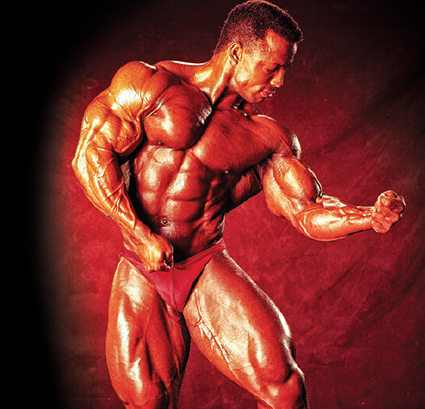
Shawn Ray
Someone who would have won multiple 202 Mr. Olympia Showdown titles, Ray made his Olympia debut in 1988, finishing 13th. Other than Lee Labrada (who finished fourth that year) and Mohamed Benaziza (finished 11th), Ray was the highest finisher that weighed in at 202 or lower. Third place would’ve been an absolute lights-out debut in the lighter division.
Ray returned to the Olympia in 1990 with a third-place finish. After another two top-five finishes in 1991 and 1992, Ray would regain podium-position status in losing to now two-time winner Dorian Yates and the ’93 second-place finisher, Kenneth “Flex” Wheeler. In 1994, Wheeler was absent from competition, so Ray was the favourite to challenge mass-monster Yates for the bodybuilding crown. However, Ray’s lines and aesthetics were not enough for the grainy conditioning and sheer muscle mass of Yates. A fourth-place finish in 1995 for Ray was disappointing, but he came in with a chip on his shoulder in ’96. In a surprise, Ray was able to top the late Nasser El Sonbaty. Ray looked incredible, but so did the entire top five. Ray would have to settle for second to Yates again.
The following year Ray grabbed third place and in 1998, Ray competed in his 10th Mr. Olympia contest and looked great, but wasn’t a threat to the crown, finishing in fifth. Another pair of top-five finishes solidified Ray’s legacy, but in 2001, at his 13th Mr. Olympia contest, Ray would call it quits on his bodybuilding career after his fourth-place result.
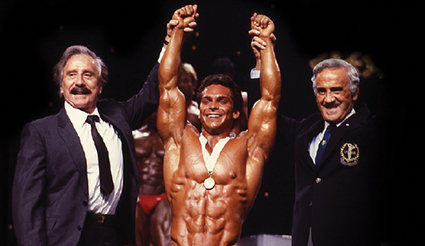
Rich Gaspari
Now a supplement company owner Rich “The Dragon Slayer” Gaspari was a household name in the bodybuilding world through the mid-to-late ’80s. Gaspari will always be remembered for insane, inside-out conditioning. It was Gaspari who started to bring deeply striated glutes to the stage. Like Ray, Gaspari was never the biggest guy on the Olympia stage. In fact, Gaspari weighed less than 10 pounds more than Ray during his prime. Gaspari was a vascular, dense, and proportionate bodybuilder who finished runner-up to one of the best of all time, Lee Haney, three years consecutively.
Of course, Gaspari’s achievements include his post-competition career with his supplement company, Gaspari Nutrition. However, Gaspari would still be remembered to this day if he hadn’t gone that route. Gaspari beat the likes of Lee Labrada, Mike Christian, Barry DeMey, and Robby Robinson multiple times at “the big dance” from 1986–88. The only thing that held Gaspari from raising a Sandow onstage was about 40 extra pounds of muscle in the shape of eight-time Mr. Olympia Lee Haney. If there had been a 212-lb. Mr. Olympia division in the late ’80s, there is no question that Gaspari would’ve racked up three consecutive trophies from 1986 until 1988.
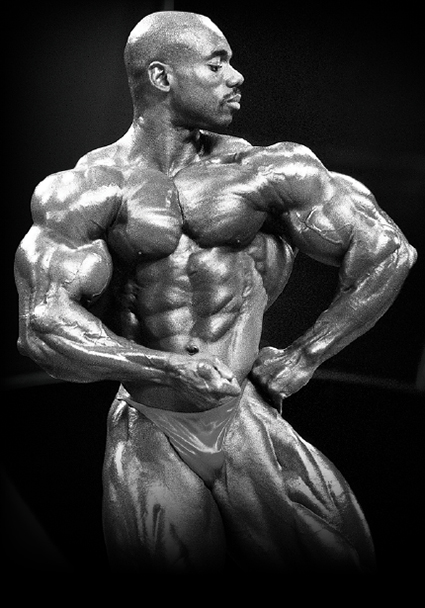
Ken “Flex” Wheeler
Long gone are the days when amateurs would turn pro and immediately hop into the deep waters of the IFBB and challenge to win shows, let alone the following year’s Mr. Olympia competition. Well, that’s exactly what Flex Wheeler did. After winning the 1992 NPC USA Championships and turning pro, Wheeler racked up four total wins in 1993 in the IFBB and an extremely controversial second-place finish at the Olympia that year.
In 1994, Wheeler was involved in a car accident that nearly took his life. It was only one year later that he would miraculously return to bodybuilding’s upper echelon of competitors. In ’95 he would go on to win the Ironman Pro and South Beach Pro. He finished second at the Arnold Classic that year and would staple down an eighth-place at the Olympia. In 1996 and 1997, Wheeler went on to win six more IFBB Pro contests, grab two more second-place finishes and a fourth-place spot at the incredibly competitive 1996 Mr. Olympia.
In 1998, thanks to Dorian Yates withdrawing from the competition three months prior to the Olympia, a new Mr. Olympia would be crowned. Wheeler was the odds-on favourite as he again won the Arnold Classic that year. It wasn’t set to be a walk in the park, though. Nasser El Sonbaty was runner-up to Dorian in ’97 and the new threat of Ronnie Coleman (winner of the ’98 Night of Champions and Toronto Pro) added intrigue to the show. These two came after perennial top-spot finishers Kevin Levrone and Shawn Ray.
At the end of the night, Ronnie Coleman edged out Wheeler by three points on the judges’ scorecards. The lights-out back-double-biceps pose that Wheeler possessed was topped by Coleman, who also brought a more conditioned and fuller package than Wheeler. Coleman would start his reign as an eight-time Mr. Olympia.
Wheeler would fall victim only to Coleman again the following year in Las Vegas, now the home of the Mr. Olympia contest. He would compete two more times at the “Super Bowl of Bodybuilding” but would never claim the crown.
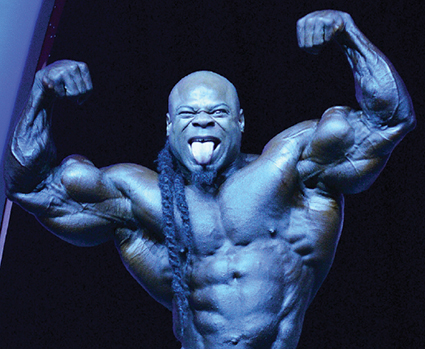
Kai Greene
In 2004, “The Predator” won the NPC Team Universe, which awarded him an IFBB Pro card. After lackluster 2005 and 2006 IFBB seasons, Greene would finally make his mark in 2007 by winning the Shawn Ray Colorado Classic. In 2008, Greene would solidify his standing as a top-tier competitor by locking down a third-place finish at the Arnold Classic and then winning the illustrious New York Pro.
In 2009, after winning the Arnold Classic and Australian Pro Grand Prix, Greene would make his Olympia debut. Of course, 2009 is the year when Jay Cutler came back and left no doubt in anyone’s mind that he would reclaim the crown as the king, convincingly beating second-place finisher Branch Warren and previous year’s winner Dexter Jackson. Greene would finish fourth, one point ahead of Phil Heath.
In 2010, Kai would repeat wins in Ohio and Australia. However, Greene would hit the second-year Olympia slump as so many do, dropping to a disappointing seventh place.
In 2011, Greene took a different route to qualifying for the Olympia. “The Predator” teamed up with coach/guru George Farah and brought an unbelievable package to New York once again and grabbed a W to qualify for the showdown in Vegas. Greene would better his previous best finish at the O with third place. He would finish behind Jay Cutler and newly crowned Phil Heath.
After taking 11+ months off from competition, Greene would return to the Mr. O in 2012. Now that Jay Cutler was out of competition, it seemed it would be a showdown between Heath and Greene. In what was arguably Kai’s most shredded package ever, he would fall behind Heath and finish in second. Shortly thereafter, Greene would finish second at the Sheru Classic.
The 2013 Mr. Olympia came around, and again Kai took nearly another year off of competition in preparation for the rematch. Again, Kai would fall short here and at the Sheru, but would grab the victory at the 2013 EVL’s Prague Pro without Heath in the lineup. 2014 saw Greene’s near-perfect combination of dryness and fullness take the stage in Vegas, but Heath would stave off Greene’s Olympia victory once again.
This brings us up to speed. After taking all of 2015 off from competing, Kai went three for three in 2016. He racked up wins at three Arnold Classics: Ohio, Australia and Brazil. There is much speculation, and hearsay that Kai may compete in 2017—but don’t hold your breath. My opinion is that if Kai shows up, if Phil Heath is in the lineup, he simply won’t be able to dethrone him, unless Heath greatly misses his conditioning. Make no mistake about it, though, Kai Greene is undoubtedly the second greatest bodybuilder in present times.
 Kevin Levrone
Kevin Levrone
The Maryland Muscle Machine is my representative for the single greatest bodybuilder to never win bodybuilding’s greatest championship. In his freshman year of the IFBB, Levrone racked up wins at the Night of Champions and Grand Prix Germany, and two second-places. One of those runner-up positions was at the 1992 Mr. Olympia contest. It was the first time in nine years that the previous year’s Mr. Olympia wasn’t competing at the following year’s show.
Many can present a plausible case for Levrone to win the 1992 Mr. O competition to this day. The back detail, thickness through the chest, delts, and triceps, and overall aesthetics Levrone brought to the stage pushed Yates to the edge and served notice that he would be a perennial Olympia threat for years to come.
In ’93 and ’94, Levrone would finish in the top five at the big dance. In ’95 Levrone would again push Yates, this time with considerably more mass than his previous runner-up finish. However, Yates had just enough to hold him at bay. As with his ’92 second-place result, there is easily a case made for Levrone edging Yates out for the Olympia crown.
In 1996 at the arguably deepest Mr. Olympia competition ever, Levrone ended up with a third-place finish. In ’97 Levrone was a little bit off (for his standards) and grabbed a fourth-place finish.
In 1998, the competition was wide-open for the taking. Levrone had racked up 19 IFBB victories by this point. The show boiled down to Ronnie Coleman and Flex Wheeler, once again leaving Levrone without the cap on his already amazing career with a fourth-place finish. One year later, the MMM wouldn’t be able to knock off either Coleman or Flex at the O, and Chris “The Real Deal” Cormier would catapult himself into third place, leaving Levrone in fourth for the third year in a row.
October 21 and 22, 2000, the Olympia made its yearly round and Levrone was poised to claim the title from Ronnie Coleman. He looked absolutely awesome at prejudging. Levrone showed up full and dry and brought the house down with his infamous finals routine. It wasn’t enough to climb ahead of Coleman, though, and he ended up with yet another second place.
In 2001, it was Jay Cutler who gave Coleman a run for his money. As a result, Levrone (who still looked unquestionably great) was bumped back down to third place.
In 2002, bodybuilding fans bore witness to quite possibly the greatest version of Levrone there ever was. For prejudging, Levrone looked good. For finals, Levrone was lights-out. He actually handily beat Coleman on the judges’ scorecards for rounds three and four. Levrone’s greatest Olympia finals routine was on display that night in 2002. He came out for his routine drier than he had ever been in Vegas before. He had sinew-splitting fullness and came to centre stage under the sound of “Who’s Got My Back?” by Creed. Upon hearing him called second place the crowd let their displeasure be heard.
After the disappointing finish in 2002, Levrone slipped to sixth in 2003 after dealing with another injury. Levrone made a comeback in 2016 and competed in the Mr. Olympia contest at the age of 51. While the hype of his return to Olympia competition led to a huge buzz for the show, he ultimately placed 16th.
Always the Bridesmaid ...
We’re kidding with that title above. While none of these men may have never walked away with the Sandow, don’t let that define them. These athletes are champions in every sense of the word. While many men have competed in the Mr. Olympia contest over the years, these athletes were always at the top threatening to usurp the Mr. O champion and take the top prize for their own. And these six men have won over 65 IFBB pro titles between them. That figure is staggering. They all truly represent the elite of their sport—the Sandow trophy be damned!


